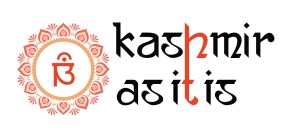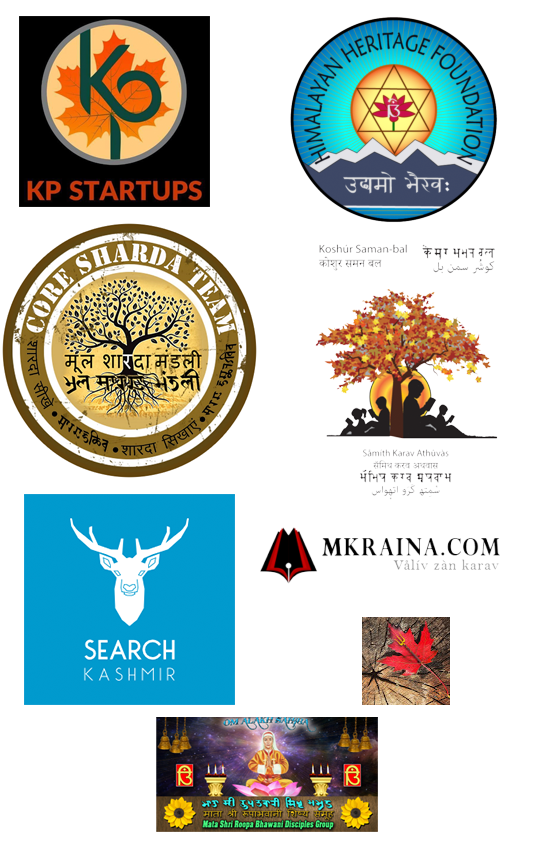Ashtami - Zoon Pachh Atham
Ekadashi - Zoon/Gatt Pachh Kah
Sankat Tschoram
This day is dedicated to Lord Ganesh.
Shitala Saptami - Shravan Gatt Pachh Satam
Dedicated to Goddess Shitala.
Haar Bah - Haar Zoon Pachh Bah
This day is dedicated to Jwala Mata, Khrew.
Vahrath Sankrath - Shravan Sankrath
The ‘Sankrati’ in the month of Shravan is called Vahrath Sankrath. Vahrat means Monsoon in Kashmiri. This day was celebrated to welcome Monsoon or Rainy season in Kashmir. Rains in Kashmir were frequent but did not last long.
On this day, specially, Yajji and Leesa was made and enjoyed with Kehwa or Sheer Chai.
There is a saying in Kashmiri, an argument between husband and wife is like ‘Vahrethuk Rud’ – which means it does not last long.
In monsoon season, Kashmiri relished delicacies like Dal Masala, Dabma (warimuth boiled and then fried with Kashmiri Spices), Yajji, Makkai wet (Corn) and ofcourse stroll around Dal Lake.
Because in Monsoon, humidity used to be high & body used to feel tired with nausea with general weakness. The body used to loose its electrolytes, therefore, in Vahrat, in KP households cooking vegetables like Nunnar (Common Purslane), Leesa (Red Amarnath, Kratz (Knapweed) was very common. Also good amount of Laasi was consumed during the day. This was all to prevent lethargy and dehydration from humid summer.
Kamika Ekadashi - Shravan Gatt Pachh Kah
Kamika Ekadashi is the day celebrated to Lord Krishna. It is said that on this day, Sri Krishna, narrated importance of Ekadashi Vrat to Pandavas and asked them to keep this Vrat to wash their sins before their complete surrender to Supreme God.
Kamika Ekadashi vrat is keep in a same way as rest of the Ekadashi Vrats.
Somri Mavas (Somavati Amavasya)
Writeup by Sh. CL Gadoo
Amavasya means the lunar phase of the New moon in Sanskrit. Ancient Indian calendars used 30 lunar phases, called tithi. The dark moon tithi is when the Moon is within the 12 degrees of angular distance between the Sun and Moon before conjunction. Amavasya is also spelled and pronounced as Amavasai or Amavas.
Amavasya is new moon day in Hindu calendar. It is significant day as many rituals are performed only on Amavasya Tithi. The Amavasya tithi is regarded as extremely auspicious among the Hindus. On this day, Hindus perform several pujas and rituals.
Amavasya falling on weekday Monday is known as Somvati Amavasya and Amavasya falling on weekday Saturday is known as Shani Amavasya. All Amavasya days are appropriate to perform Pitra Tarpan and Shradha rituals to appease ancestors. As Somvati Amavasya falls on Monday, Hindus offer prayers to Lord Shiva on this day and falling during the month of Sawan makes it special occasion.
In fact, the significance of Somvati Amavasya was narrated to Yudhistira, the eldest Pandavas, by Bhishma Pitamah in the epic Mahabharata. After the Kurukshetra war, Yudhistira was worried about the Kuru-Pandavas dynasty. He approached Bhishma Pitamah to take advice on how to rejuvenate the dynasty for his coming generations. Bhishma advised Dharmaraj Yudhistira to observe Somvati Amavasya Vrata. He told King Yudhistira that whosoever observes the Somvati Amavasya Vrata would get long-living and noble children. He also told Yudhistira that taking a holy dip in the sacred rivers helps devotees to get rid of their various problems.
The civilisational unity of the Hindus in India is symobalised by its collective consciousness of their spiritual heritage. Kashmir has for centuries been a part of the civilisational unity of the Hindus in India. The remains of the ancient temples in stone are a mute testimony to the continuity of the history of the Hindus in Kashmir. Centuries of oppression and persecution have left their mark on the Hindu heritage of Kashmir.
It is also believed that on Somvati Amavasya taking a holy dip in the sacred rivers such as Ganga, Yamuna and Vitasta brings peace to our deceased ancestors and washes away all our sorrows and sins. On this occasion, Kashmiri Pandits would observe a grand bathing festival at Somyar Yarbal and after that would pray Shivlinga at adjusant Somyar Mandir, situated on the banks of Vitasta at Habakadal in Srinagar. The ancient Mandir is no longer thronged by the Hindu devotees, who are languishing in exile, hundreds of miles away. Somyar stands desolate in silence. The voice of a million hymns that filled its portals is also sunk in silence.






